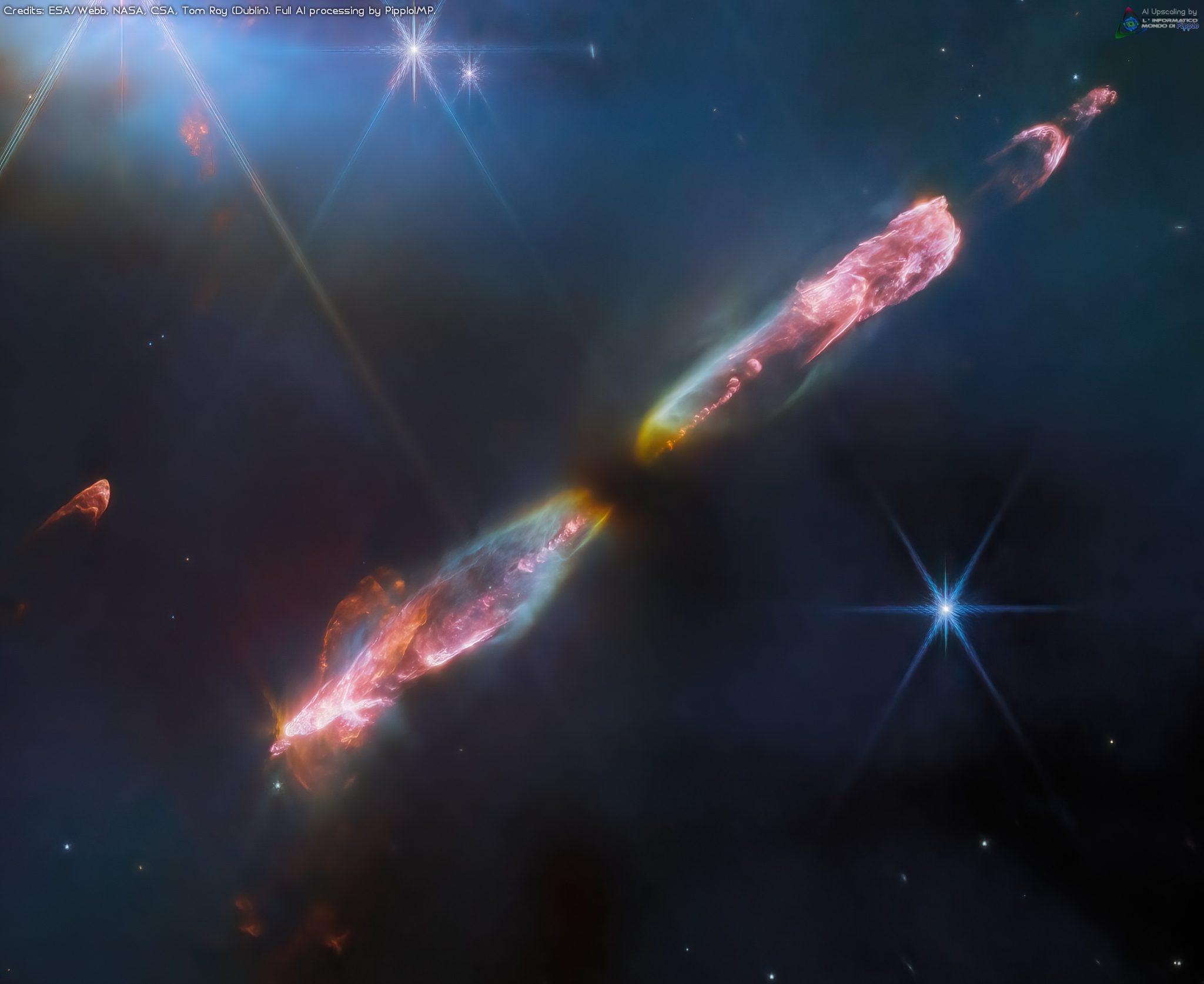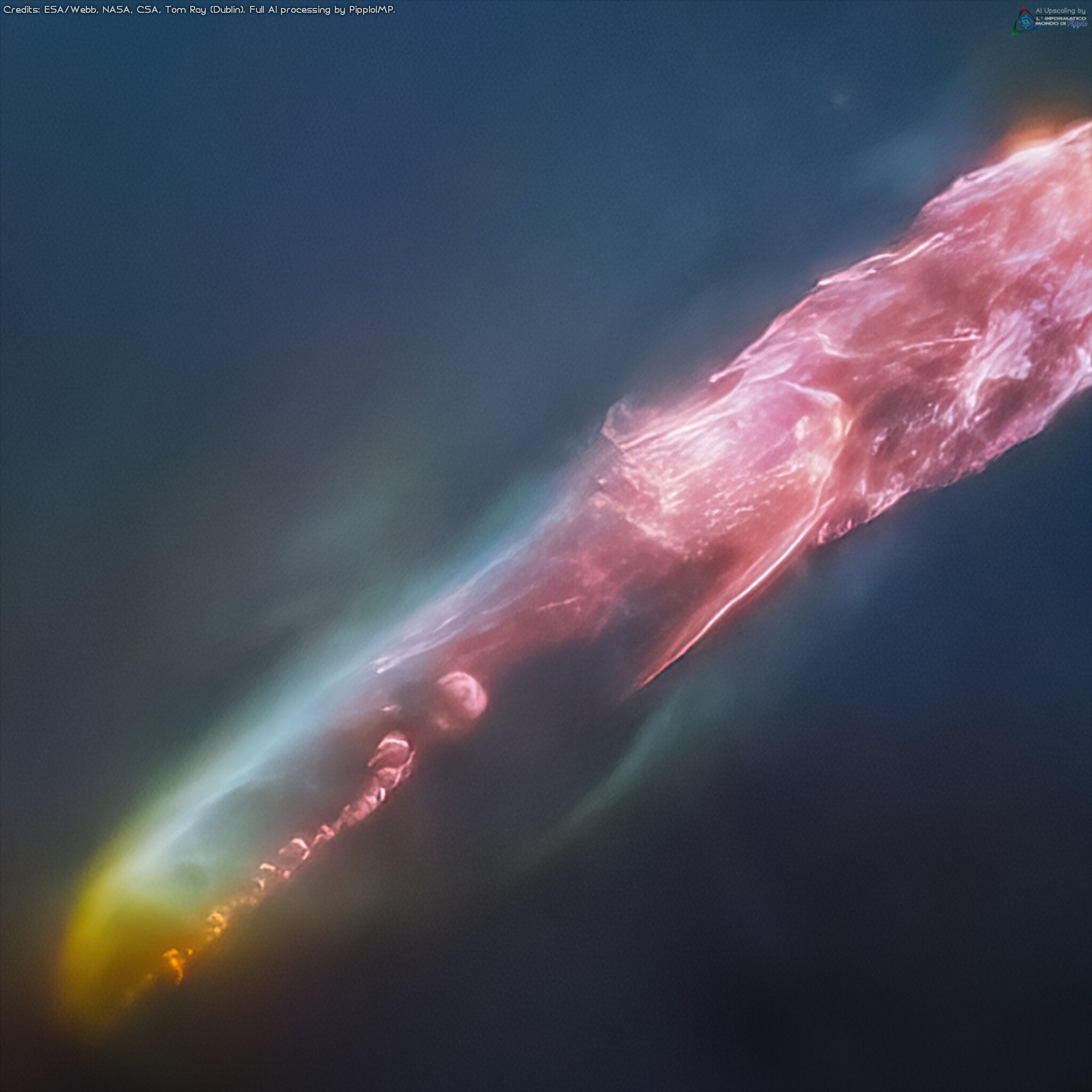

The image published by the JWST team, today 14 September at 14:00 UTC, tells of a Herbig-Haro (HH) object, HH 211 to be precise, formed by jets from a Class 0 protostar, with a mass comparable to 8% of the current Sun. It is a star that could grow to become like our Sun. Our star, when it was only a few tens of thousands of years old, must have looked like this. It lies 1000 light years away from us, in the constellation Perseus.
Herbig-Haro objects are formed when stellar winds, or gas jets escaping from newborn stars, form shock waves that collide with gas and dust at high speed. Molecules excited by the turbulent conditions, including molecular hydrogen, carbon monoxide and silicon monoxide, emit infrared light. This is collected by Webb, in this case by the NIRCam, mapping the structure of these fluxes.
The colour scheme associated with the various wavelengths are:
purple for F162M and F164N; blue for F210M and F323N; cyan for F335M; green for F460M; orange for F466N; and red for F470N.
Reposted from
